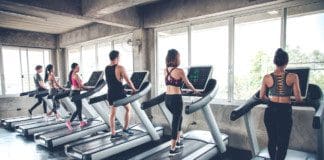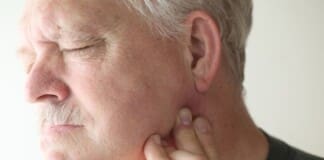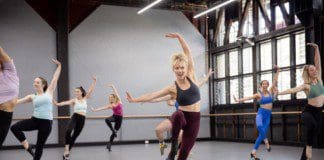Reaching, twisting, walking, and driving are everyday activities that require upper and lower back strength. An aching back can easily affect daily activities, generate frustration, anger, and affect all-around health. The more back muscle strength an individual has, the more they can accomplish far more without injury. Immense power is not required to protect the body from a back injury. All that is needed is regular, consistent physical activity and exercise. A balance of body strength is vital for preventing injury. However, overdoing one fitness exercise or physical activity can imbalance musculature, leading to injury. Because the back/spine is the central part of the body, complete and proper care is necessary for optimal health and wellness. For individuals experiencing sore, aching, and tired muscles, here are some exercises that will help in the process.

Table of Contents
Alternating Arm and Leg Extensions
Alternating extensions help build strength and coordination in the core areas. The back muscles increase their efficiency by creating muscle memory that supports the work shared by all the torso muscles. Upper and lower back muscles must work together to maintain a healthy balance and not overwork each other, causing strain and fatigue.
- Start by placing hands and knees on the floor with the head directly between shoulders and facing toward the floor.
- Feet are directly in line behind the buttocks and resting on the floor.
- Hips and shoulders rest above the knees and hands.
- Raise the right hand straight ahead with the arm at full length.
- At the time same time, raise the left leg straight behind the body.
- Try to keep the arm and leg as straight as possible.
- Hold for 10 seconds.
- Switch sides.
- Repeat three to eight times, depending on strength level.
- If it is difficult, a modified option is to raise the arm and leg separately.
Plank Hold
These can help build back muscles and strengthen the arms, legs, and the front torso area. Plank holds are a recommended starting point. Plank holds can be done on the elbows, palms of the hands, or closed fist hands. The key is to keep the shoulders, hips, and ankles straight like a wood plank parallel to the floor.
- Place hands and feet directly on the floor like doing a push–up.
- Toes should be on the floor.
- Keep the abdominals tight and buttocks lifted to prevent straining the lower back.
- Face straight down.
- Hold for a count of 10.
- Repeat three times.
- For those with an aching back, keeping the hips level with the shoulders could be challenging at the beginning.
- With practice, it will become easier; then, the individual is recommended to increase the length of time until 30 seconds is achieved.
- Then increase the challenge to try more than three repetitions.
- A modification for beginners is to start with the body resting on the floor, stomach down.
- Then raise the body into the start position from the floor.
Hip Raises
Hip raises help to strengthen the lower back muscles to unite and support the lower half of the body. Training the body to work cooperatively is critical for reducing the aching and pain from muscle imbalance.
- Rest the body flat on the floor, facing upward.
- Place the hands flat at the body’s sides.
- Knees should be about shoulder-width apart.
- Keep the feet flat on the floor
- Pull the feet toward the buttocks.
- Look straight up.
- Raise the hips as high as possible while pressing down with the hands.
- Hold for 10 seconds.
- Complete five to eight reps.
Cross Body Standing Lateral Arm Raises
Lateral raises or side lateral raises help strengthen and tone the shoulder muscles and the upper back muscles.
- Begin with a single one-pound weight.
- Face forward.
- Stand with the feet shoulder-width apart.
- Bring the weight to rest near the left hip bone.
- Gently raise the weight across the body to arrive just above the right side with the arm at full length.
- Make sure that shoulders and hips are stationary and that only the arms move. Do not twist.
- Hold for 10 seconds.
- Repeat three to eight times.
- Switch sides.
- Modification can be done by sitting in a comfortable chair with proper posture in a chair instead of standing.
- If weights are too challenging to work with initially, complete the exercise with only the hands placed with the palms flat and together.
Aerobic Activity
This helps circulate blood throughout the body, helping to reduce muscle soreness. A few gentle and aerobic activities can include:
- Brisk walking.
- Stair climbing.
- Bicycling, elliptical, or rowing machine workout.
- Physical activity that keeps blood moving throughout the body. Examples include yoga, gardening, and dancing.
While the back is healing, go at a gentle even pace for any activity. Jerking and quickly stopping can be hard on joints and discs. When injured, the other muscles try to compensate to avoid causing a flare-up that could worsen the injury and/or create a new injury.
Aching Back Muscles
Strength-building exercises are great for preventing injury and avoiding re-injury. However, avoid overreaching or overstretching with any of the activities. Continuous aching or painful back muscles could indicate something else is occurring that could be:
- A pinched nerve.
- Shifted/misaligned discs.
- Disc herniation.
- The beginning of an arthritic condition causing inflammation.
- Back muscle tear/s.
- Pregnancy.
Body Composition
Sarcopenia – Loss of Skeletal Muscle Mass and Strenght Causes
Decreased Physical Activity
- Physical inactivity is one of the primary contributors to sarcopenia.
- Sedentariness can exacerbate the effects of sarcopenia.
- Regular resistance exercise can help maintain muscle mass and build muscular strength.
Decrease in motor neurons
- Aging is accompanied by a loss of motor neurons caused by cell death.
- This can lead to a decrease in muscle fibers and size.
- This decrease leads to:
- Impaired performance
- Reduced functional capacity
- Decreased ability to perform everyday tasks.
Increase in Pro-inflammatory Cytokines
- Poor diet and exercise also promote the storage of visceral fat.
- This type of fat tissue produces pro-inflammatory cytokines.
- This can accelerate muscle breakdown.
- Obesity and muscle weakness are associated with high levels of pro-inflammatory cytokines.
References
Alfuth, M, and D Cornely. “Chronischer lumbaler Rückenschmerz : Vergleich zwischen Mobilisationstraining und Training der rumpfstabilisierenden Muskulatur” [Chronic low back pain : Comparison of mobilization and core stability exercises]. Der Orthopade vol. 45,7 (2016): 579-90. doi:10.1007/s00132-016-3233-1
Kim, Beomryong, and Jongeun Yim. “Core Stability and Hip Exercises Improve Physical Function and Activity in Patients with Non-Specific Low Back Pain: A Randomized Controlled Trial.” The Tohoku journal of experimental medicine vol. 251,3 (2020): 193-206. doi:10.1620/tjem.251.193
Smith, Benjamin E et al. “An update of stabilization exercises for low back pain: a systematic review with meta-analysis.” BMC musculoskeletal disorders vol. 15 416. 9 Dec. 2014, doi:10.1186/1471-2474-15-416
Suh, Jee Hyun et al. “The effect of lumbar stabilization and walking exercises on chronic low back pain: A randomized controlled trial.” Medicine vol. 98,26 (2019): e16173. doi:10.1097/MD.0000000000016173
Professional Scope of Practice *
The information herein on "Exercises For An Aching Back" is not intended to replace a one-on-one relationship with a qualified health care professional or licensed physician and is not medical advice. We encourage you to make healthcare decisions based on your research and partnership with a qualified healthcare professional.
Blog Information & Scope Discussions
Our information scope is limited to Chiropractic, musculoskeletal, physical medicines, wellness, contributing etiological viscerosomatic disturbances within clinical presentations, associated somatovisceral reflex clinical dynamics, subluxation complexes, sensitive health issues, and/or functional medicine articles, topics, and discussions.
We provide and present clinical collaboration with specialists from various disciplines. Each specialist is governed by their professional scope of practice and their jurisdiction of licensure. We use functional health & wellness protocols to treat and support care for the injuries or disorders of the musculoskeletal system.
Our videos, posts, topics, subjects, and insights cover clinical matters, issues, and topics that relate to and directly or indirectly support our clinical scope of practice.*
Our office has reasonably attempted to provide supportive citations and has identified the relevant research study or studies supporting our posts. We provide copies of supporting research studies available to regulatory boards and the public upon request.
We understand that we cover matters that require an additional explanation of how it may assist in a particular care plan or treatment protocol; therefore, to further discuss the subject matter above, please feel free to ask Dr. Alex Jimenez, DC, or contact us at 915-850-0900.
We are here to help you and your family.
Blessings
Dr. Alex Jimenez DC, MSACP, RN*, CCST, IFMCP*, CIFM*, ATN*
email: coach@elpasofunctionalmedicine.com
Licensed as a Doctor of Chiropractic (DC) in Texas & New Mexico*
Texas DC License # TX5807, New Mexico DC License # NM-DC2182
Licensed as a Registered Nurse (RN*) in Florida
Florida License RN License # RN9617241 (Control No. 3558029)
Compact Status: Multi-State License: Authorized to Practice in 40 States*
Presently Matriculated: ICHS: MSN* FNP (Family Nurse Practitioner Program)
Dr. Alex Jimenez DC, MSACP, RN* CIFM*, IFMCP*, ATN*, CCST
My Digital Business Card














